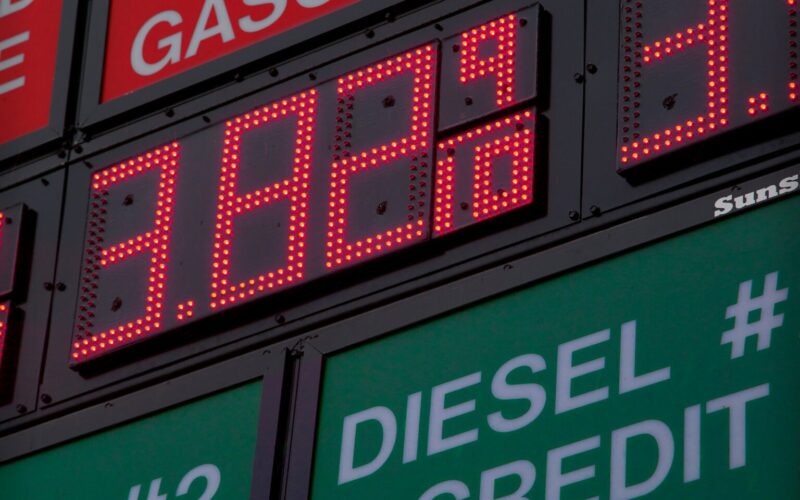
When you make purchases through our links we may earn a small commission.

Photo Credit: Jack Prichett
🇺🇸 Support us on Patreon for only $1.99 a month 🇺🇸
🍻 Join us on Facebook @TheSmokingChair 🍻
Content Continues Below
The COVID-19 pandemic has left an indelible mark on nearly every aspect of global life, and one of its most significant impacts has been felt in the realm of supply chains. From toilet paper shortages to disruptions in semiconductor manufacturing, the pandemic has exposed vulnerabilities in the intricate networks that keep goods flowing around the world. Among the most noticeable effects has been the spike in gas prices, which, during the Biden administration, became a topic of intense scrutiny and debate.
Gas prices are notoriously sensitive to shifts in supply and demand, and the pandemic wreaked havoc on both fronts. As governments implemented lockdowns and restrictions to curb the spread of the virus, economic activity ground to a halt in many regions. With people staying home and businesses shuttered, the demand for oil plummeted. Airlines grounded flights, commuters stayed off the roads, and industries scaled back production. As a result, oil prices crashed to historic lows in the early months of the pandemic.
However, the collapse in demand was only one side of the equation. The supply side was equally disrupted by the pandemic-induced chaos. Oil production relies on a complex web of infrastructure, including drilling rigs, refineries, pipelines, and tanker ships. The sudden drop in demand caught many producers off guard, leading to a scramble to cut output and reduce costs. Companies slashed capital expenditures, laid off workers, and shelved exploration projects. The oil market found itself awash in surplus crude with nowhere to go.
Compounding these challenges were the logistical nightmares unleashed by the pandemic. Ports closed, borders tightened, and quarantine measures disrupted shipping routes. Tanker crews found themselves stranded at sea, unable to disembark at their destinations. The closure of refineries and distribution centers further exacerbated the bottlenecks in the supply chain. Suddenly, the world was facing not just a demand shock but a supply crisis of unprecedented proportions.
The Biden administration inherited this tangled web of challenges when it took office in January 2021. As President Biden moved to tackle the public health and economic fallout of the pandemic, the issue of rising gas prices loomed large on the agenda. Critics were quick to seize on the opportunity to blame the administration for failing to rein in costs at the pump.
However, attributing the spike in gas prices solely to the actions or inactions of the Biden administration oversimplifies a complex and multifaceted issue. While government policies certainly play a role in shaping energy markets, they are only one piece of the puzzle. The global nature of the oil industry means that prices are influenced by a myriad of factors, including geopolitical tensions, currency fluctuations, and the actions of major producers such as OPEC and Russia.
Moreover, the structural vulnerabilities exposed by the pandemic were years in the making and cannot be undone overnight. Decades of underinvestment in infrastructure, combined with the increasing complexity and interconnectivity of global supply chains, have created a fragile system prone to disruption.
As the world continues to grapple with the aftershocks of the pandemic, policymakers face the daunting task of building more resilient and sustainable supply chains. Investments in infrastructure, technology, and workforce development will be essential to mitigate the impact of future crises and ensure the smooth functioning of global markets.
In the meantime, consumers will continue to feel the pinch at the pump as gas prices fluctuate in response to the ebb and flow of supply and demand. While politicians may seek to capitalize on these fluctuations for short-term gain, the long-term solution lies in addressing the root causes of supply chain chaos and building a more resilient economy for the future.
- #TAGS: covid-19, economy, gas prices, inflation, Supply chains, Trump Did That
SHARE
RECOMMENDED FOR YOU:
Financing Universal Basic Income: A Comprehensive Approach
You’ll get more articles like this – and our favorite promotional offers delivered straight to your inbox.
By submitting this form you agree to our terms and conditions. You can unsubscribe at any time.

GFYG: Sexy CORSETS That Your Girl Will Love

GFYG: Try-on Halloween Costumes Ft. Mi jefa 🤭

GFYG: SEXY WINTER LINGERIE TRY-ON HAUL

Video: Valentine’s Day Lingerie Try On | Valentina Victoria

GFYG: Bri Lauren Halloween Costume Haul 🔥

Universal Basic Income vs. Welfare: A Comparative Analysis








































